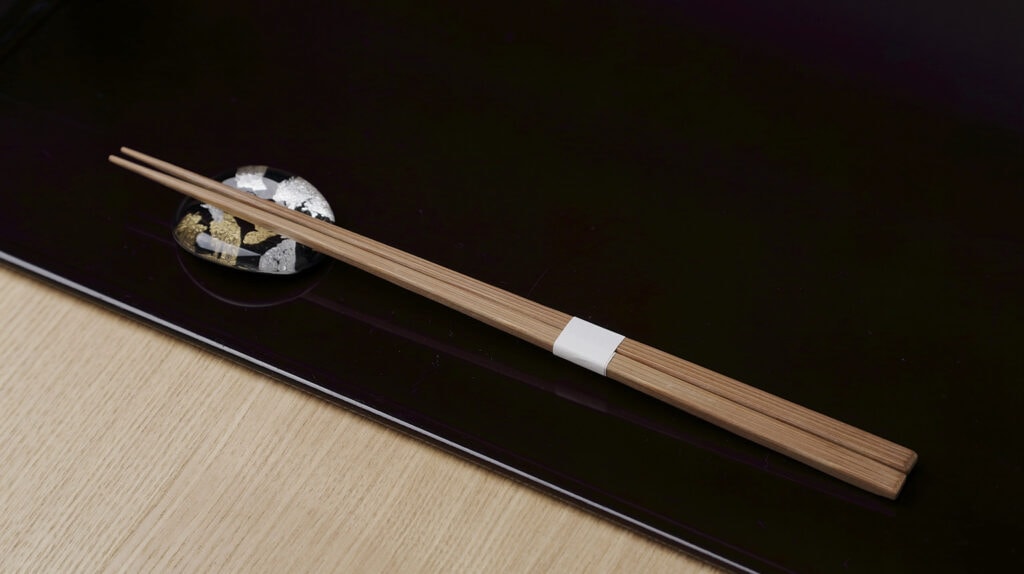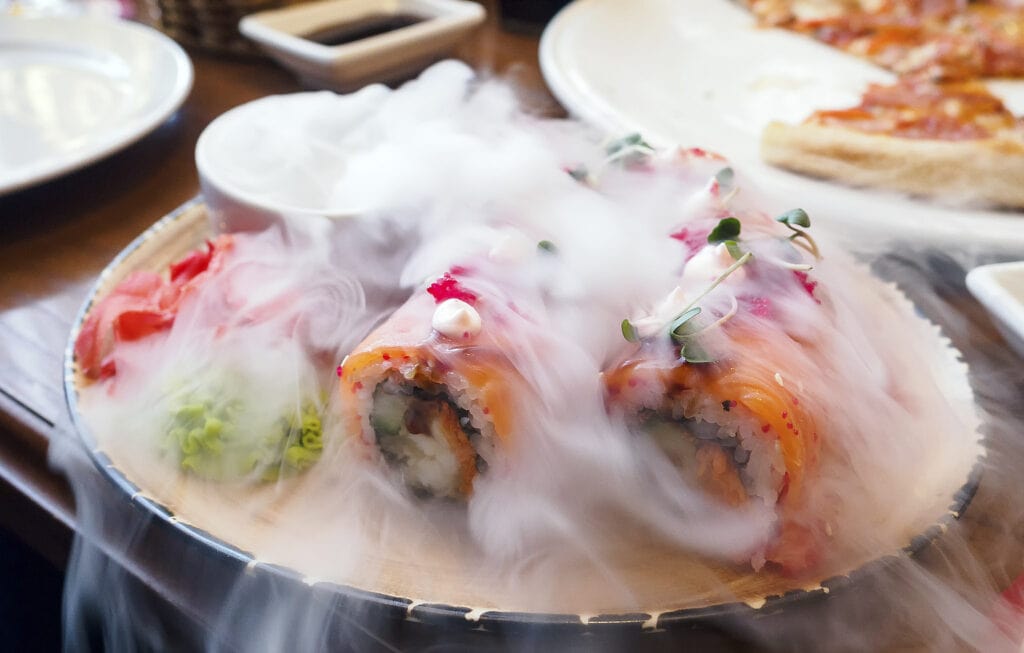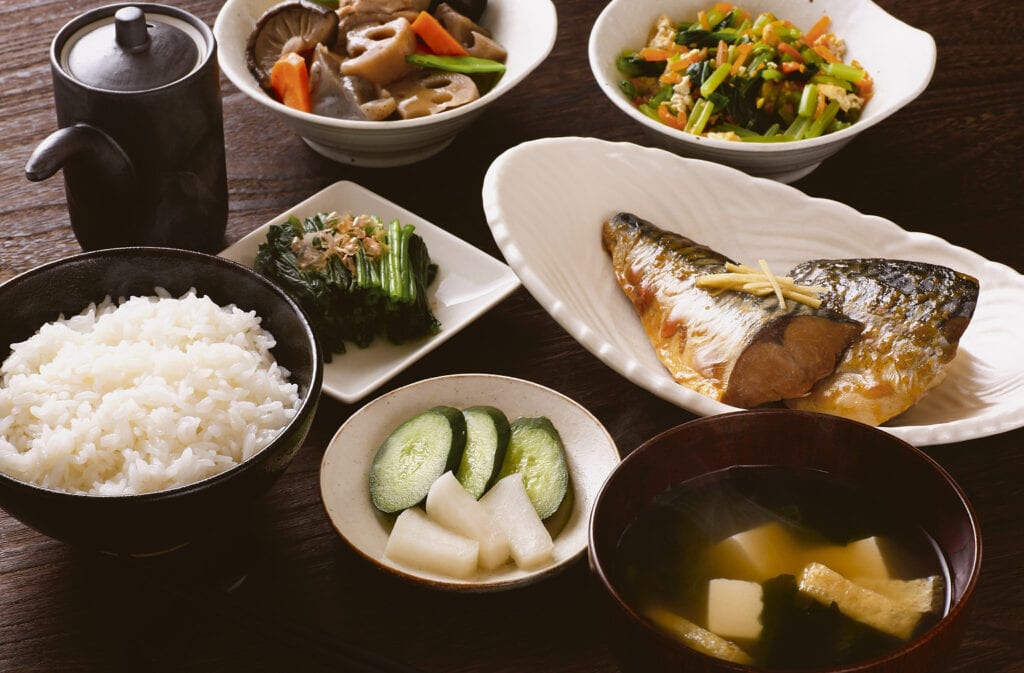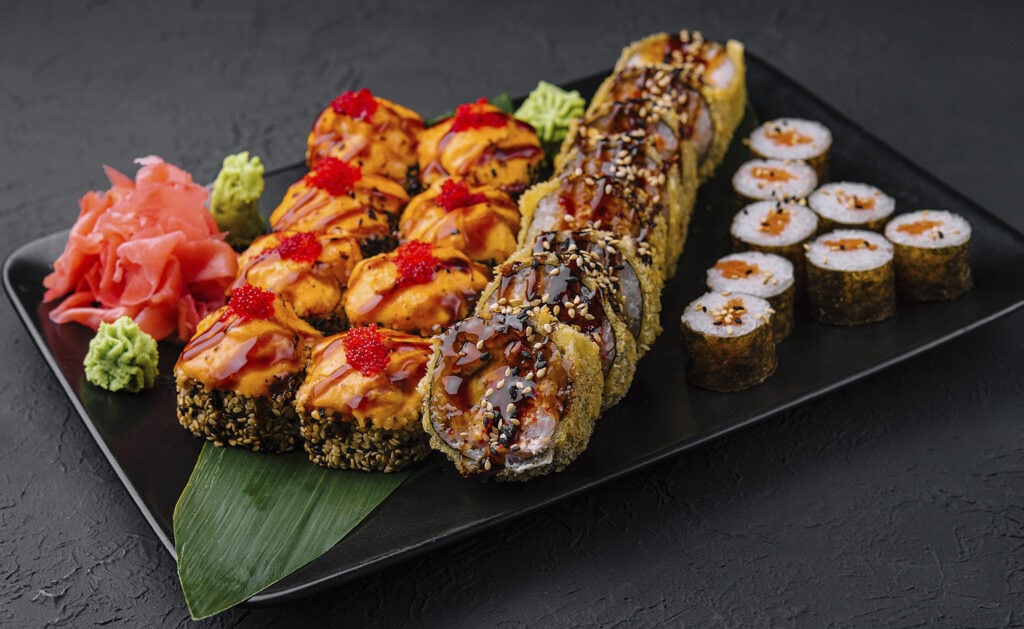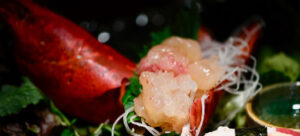Sushi seems to be available on every corner these days - but only Japanese cooks know how to season the rice properly and cut the fish correctly.
That's more or less what it said on our homepage shortly after the opening of the restaurant sansaro in 2007.
And even if it is of course an exaggeration, since there are also excellent Korean, Chinese or Myanmar sushi chefs, there is an essential truth behind it: the vast majority of "Japanese" restaurants or sushi restaurants that you find in Munich, for example, are neither run by Japanese, nor operated with Japanese chefs, nor run with a sense of Japanese culture and culinary arts.
The taste picture, which one thereby of Sushi and other Japanese dishes is unfortunately very distorted. The typical feeling of "Hmm, that tastes like Japan" does not arise for Japan connoisseurs in the vast majority of "Japanese" restaurants. It remains a stale experience.
This is very unfortunate, because even if you don't speak perfect Japanese, haven't traveled to or grown up in Japan for a long time culinary-wise, even then the sensitive foodie can taste a great deal about a country's culture when tasting real Japanese cuisine.
Japanese cuisine is a reflection of Japanese culture
It is said that cuisine is a reflection of the culture of the country in which it was created. And Japanese culture is extremely complex and deep - to explain this and the connection to cuisine, we need to expand a little.
For example, in Japan there is the concept of 道, read Michi, translated as "the way". We know the same character read as "Dō" from martial arts like Judō, Kendō, Aikidō. But what does this have to do with Japanese food?
Typical Japanese way of specialization
What is called the "Way" is the state of mind of continuously pursuing a thing in depth and fully internalizing it as a way of life.
The ostensible goal is to achieve a state of mastery, - but the real way, the real goal is not to achieve this apparent outward mastery, but to continue to pursue the subject with alert senses and to gain more experience, to develop steadily.
The first step for this is the form, in Japanese kata (型, aAgain, some people know this term from the martial arts), which were established by the predecessors and role models. People who know this terminology, are urged by them these techniques to explore in order to eventually discover the essence of these forms within themselves.
This idea (which we in the West know from many other arts of Japanese culture besides martial arts, such as calligraphy, ikebana, the tea way, woodcraft) is also deeply rooted in the Japanese idea of cooking.
By the way, all these ways are also essentially to contribute to the formation of the heart, that is, to the formation of character.
Example from the practice of SUSHIYA GmbH: when we discuss a new applicant for Japanese cuisine with the team, a look at the character, unwavering willingness to learn and social behavior is often a very decisive assessment point whether we have the impression that an employee fits into our Japanese team. All highly qualified Japanese chefs who have ever worked at sansaro had always essentially looked at character.
Own mastery arises on the basis of handed down experiences
The first step is to learn the techniques and ideas of traditional Japanese cuisine and eventually develop your own style based on knowledge of these ancestral traditions.
Chefs who have mastered this path are clear and determined in their own art. For the dishes of these chefs reflect solid skills and a taste that excites and fulfills the eater without relying on superficial effects or over-staging to have to fall back on.
Unfortunately, we have to realize again and again that Munich and the western world is flooded with (apparent) Japanese restaurants, where chefs work, who make sushi according to the name - but have not actually internalized any of the principles described above.
Therefore, the question arises, how can you actually recognize and distinguish good Japanese restaurants outside of Japan?
Recognize Japanese run restaurants
If you haven't grown up with a particular cuisine, haven't absorbed its value system and cultural context over many years, then it's difficult to authentically reproduce the true flavor of a cuisine.
So how can you recognize Japanese restaurants "from the outside"? We give a few tips & insights here.
Don't lump all Asian cuisines together (with Japanese)
Japanese cuisine is unique. Of course, every culture likes to say that about itself, but there is a reason that Washoku (和食), the classic Japanese cuisine., recognized as a World Heritage Site since 2013.
Japanese cuisine is not the same as Asian cuisine.
Typical differences are found for example between the Chinese and Japanese cuisine:
- Intensive use of oil vs. relatively low use of oil
- Predominantly cooked food vs. lots of raw food
- Development and extensive use of dried foods vs. showcasing the unadulterated flavor of fresh ingredients
- Complex cooking processes and seasonings vs. careful cooking processes depending on the material to bring out the natural flavor of the ingredients
What are central characteristics of Japanese cuisine?
- Use of seasonal ingredients
- Cooking processes and preparation methods that bring out the best in each ingredient
- A wide range of fermented foods (e.g., tsukemono, soy sauce, natto, umeboshi, miso, etc.).
- Rice as the basis of cuisine
Are there Japanese chefs or chefs trained in Japan?
Does the restaurant have Japanese chefs, or at least chefs trained in Japan?
Not every chef who looks Asian is a trained Japanese chef or even a trained sushi master.
For example, in 2022 in Munich you can about 432 restaurants (* according to the Internet platform Restaurant Guru) that have sushi on the menu. There are some already closed restaurants among them - but for sure there are far more than 100 restaurants and delivery services that offer "Sushi" in Munich.
We know of locally less than a dozen Japanese chefs in the same period. Among them, to our knowledge, only two sushi masters trained in Japan and about six chefs who really underwent in-depth training as a chef in Japan from the beginning (versus Japanese who taught themselves to cook over time abroad).
No wonder that in 98% of all the "sushi" restaurants we visited in Munich, we couldn't perceive any tasteful memory of Japan or simply joy about the good food. Sorry! Why especially sushi is so complex, why sushi is fundamentally different from almost all other forms of cuisine including fine dining, we will explain soon in another post.
Does the restaurant serve a Tosa-Shōyu or just any wholesale soy sauce?
Good sushi restaurants are very particular about the soy sauce.
Mostly you will find in Munich and in Germany a finished Soy sauce get, as you can buy them in the store. If you are lucky (!), then they are Yamasa or at least Kikkoman-Soy Sauce.
In a good Japanese restaurant, however, the soy sauce (Shōyu) is refined again with seaweed, bonito flakes, perhaps a little mirin, among other things. This is then called Tosa Shoyu.
By the way, in the restaurant Sansaro we cook since 2009 on the basis of the Ark organic shoyu from Japan (as far as we know, we are the only sushi restaurant in Germany that uses an organic soy sauce), so that the soy sauce goes even better with sushi & sashimi.
Find a wide selection of nigiri sushi or maybe even gunkan on the menu?
Sure, the world loves maki rolls, - but the Japanese love nigiri!
This is the classic sushi style and not at all about the California Rolls, as actually some people believe.
So, in a restaurant run by Japanese chefs or with a sense of Japanese taste and culture, you will always find in the sushi section an interesting selection of Nigirizushi find
Ideally, more than just salmon and tuna, because salmon in particular has only recently been added to the sushi menu in Japan.
And, of course, it's like this: for almost any kind of nigiri, you need to know the right cutting technique and the right way to handle fish. Because you not only taste the cut, you also see it - unlike a roll, where it disappears, in the worst case under a thick sauce.
Next time you visit a restaurant, pay attention to this important detail and check what kind of sushi is offered on the menu as special recommendations. And if you see sushi rolls with truffle flavor on the menu, then you already know what the hour has struck...
Are a lot of sauces and intense flavors used?
Japanese cuisine is based on subtraction, on bringing out and gently accentuating the ingredients' own flavor.
To bring out this flavor optimally, the spices are reduced to a minimum. For this reason, the sense of taste can not be deceived. Good cooks, who know all the ingredients, selectively use few or simple spices.
Of course, there are wonderful special spices in Japanese cuisine, such as Sanshō pepper. However, you will always see this used in moderation; there are very rarely just dishes swimming in a fiery Thai curry sauce, for example, where the meat or vegetables end up just providing texture for the bite. This is a fundamental difference from many other cuisines from the Asian region and is one of the reasons why there is always "innovative" or "modern" sushi (with many sauces) in non-Japanese "sushi" restaurants.
Does the restaurant use ingredients that are in season?
Japanese appreciate above all the special, the seasonal and the regional specialties. The special insularity, thereby for hundreds of years also closed to foreign countries, the topography with many mountain regions has the Japanese their different local, regional foods and the seasonal context virtually burned into the collective consciousness.
Therefore, they not only taste and feel the change of seasons, but seasonal foods are also good for health, as they have been proven to have twice the nutritional value. This experience is still known, at least to older Japanese, and old-school Japanese cooks are also particularly knowledgeable about it.
However, it must be said that this is already an advanced tip.
Because you have to give Japanese restaurants in Germany credit for the fact that it's very difficult to get the German public excited about seasonal food. What the farmer doesn't know, he doesn't eat.
And Japanese restaurants in Munich have been struggling hard for the last 20-30 years to get the mass of German diners to understand the special effort, the special approach of Japanese cuisine... So when in doubt, pay attention to whether there are always seasonal specials or recommendations that are on a daily menu or that the service just hands out verbally....
Does the restaurant use high-quality rice of the Japonica genus?
The basis of Japanese cuisine is rice. Rice of the genus Japonica, which accounts for only 20 % of the world's rice production, has the right consistency when cooked and is an important factor in the taste of sushi.
From Japonica-rice and various suitable varieties, sake is also produced. Here, the Japanese island economy comes full circle, which has indeed intensively interwoven cultural and culinary developments in all areas.
Good rice is a key cost factor in a sushi restaurant. Therefore, it is not necessarily a sign of bad planning if late at night the rice is sometimes sold out - the rice for sushi must be prepared, cooked, seasoned, cooled long before your visit. A good restaurant pays attention to this resource.
How are the chopsticks placed at the table and which chopsticks are used?
The chopsticks tell a lot about whether the restaurant is Japanese run or not.
It's true that Japan today is a country that seems almost obsessed with recycling, developing economical engines and conscientiously collecting every newspaper as waste paper. But when it comes to chopsticks, the Japanese have been very influenced by the Shintō religion since time immemorial. Purity and that's where the image comes from that chopsticks were given to people by the gods, or chopsticks are even a bridge to the gods. That is why there are even rikyūbashi, Chopsticks used in the Kaiseki, the classic haute cuisine of Japan, are used, and which have a second lace side "for the gods".
Attention: if you metal chopsticks in a supposedly Japanese restaurant or a restaurant where there is sushi, then you know immediately that this restaurant is not run by Japanese or by people who have no sense of Japanese culture and cuisine!
Metal chopsticks or plastic silver chopsticks that look like metal have nothing to do with Japanese cuisine.
You can definitely find reusable chopsticks in Japan, but more likely in cheap restaurants. Any self-respecting restaurant will offer its customers reusable chopsticks. Waribashi offer: Chopsticks that are used only once or, in other words, no one else has had in his mouth before.
From your sitting position, are the chopsticks horizontal or vertical at the table?
Horizontal is the correct answer here.
This is important not only because they are then particularly pleasant to grip (principles of the Moritsuke don't forget!), but also because it is simply not proper to point the chopsticks directly at other people.
If the chopsticks are ready vertically at their table, then they automatically point at your counterpart. A little aggressive, don't you think?
Since ancient times, chopsticks have been considered sacred in Japan, and there are rules for their use. For example, it is very frowned upon to hold a chopstick in each hand and use it like a knife and fork, or to put chopsticks in a bowl of rice.
Proper handling of chopsticks is also a criterion of whether a person is a professional in Japanese cooking or not.
So by the arrangement of the chopsticks as well as the type of chopsticks, you can easily tell if the restaurant is really run by people who love Japanese culture and thus can have a real understanding of the cuisine.
Do you have any further questions or suggestions?
In this day and age when we are inundated with information and things that are a mixture of right and wrong, we should cultivate the knowledge and taste to recognize and feel the right values. Because to taste the genuine flavor and real quality is the greatest luxury of all.
If you have any further questions about Japanese restaurants in Munich, Japanese cuisine or other experiences -. write to us! We look forward to your feedback or questions!
Which Japanese restaurants in Munich are recommended?
Japanese cuisine is close to our hearts, so we're tinkering with an overview of the Japanese restaurants we can recommend in Munich.
Take a look and also feel free to let us know what your opinion is. But most of all, support the restaurants that strive for authentic Japanese quality, visit these restaurants and trust them that they know what they are doing. The japanese cuisine is considered one of the best in the world, but for this the necessary preparations and circumstances are also very complicated.
